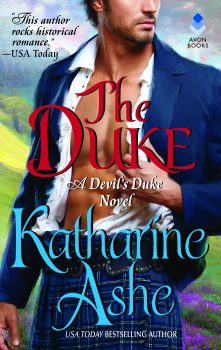Cinderella Revisted (Or, Why I Teach the History of the Romance Novel to University Students)
Originally published in Gender & Genre Blog on May 2016
Testimony: When I was young, I loved the Cinderella story.
What’s not to love? Poor, hardworking, warmhearted girl beaten down by life gets rich, handsome, powerful guy, and—bonus!—gets to thumb her nose at the mean girls. As sanitized by Disney, with the addition of adorable mice, it’s pure charm.
Then I went to college and became Aware.
Class. Race. Gender. I barely knew the words before I started studying history, literature, civil rights, and government at the university level. And I certainly didn’t know how I’d learned to swallow the insanity of inequality embedded in the fabric of this Great Nation—and in its every industry—without ever questioning it, especially the inequality of the sexes.
Fast-forward twenty-five years, during which I became a professor of history and religion, a published romance novelist, a wife, and a mother.
And a feminist.
Cinderella no longer looked so good to me.
I got to pondering how the trope is often represented in romance novels, regardless of sub-genre: a heroine of low power, financial and social status challenges a hero of high power, financial and social status to revisit his priorities until he falls for her and, by marrying her at the end, shares his power, wealth and status with her. Why, I wondered, when women in contemporary America are managing (despite enduring structural inequities) to climb to the heights of all the professions, is this trope still so popular in fiction and film? It’s fantasy, sure, and fantasy can be a relief from tough reality. But I find the snap and sparkle of romances between equals much sexier. And hugely popular heroes like Buffy the Vampire Slayer and Katniss Everdeen suggest that there’s another potent model for female protagonists out there. Those stories are also about the girl who is essentially powerless in her society nevertheless achieving extraordinary success—but as a hero on her own merit, not as a princess-by-marriage.
So why does the meeting of unequals represented in the Cinderella trope still resonate so acutely with modern readers? As a professor is wont to do when mulling a Weighty Question, I decided to teach a class on it.
The course would be interdisciplinary in nature, with emphasis on the history of the genre and the industry, analysis of the literary form, tropes and themes, investigation into representations of gender and sexualities, and some creative writing. Developing this course (finding support at my top-tier research university to get it on the books, gathering funding for it, choosing what to include on the syllabus) and teaching it has been more educational for me than I ever imagined.
Lessons Learned:
- Few people know that the creation of the romance novel in the eighteenth century was in fact the creation of the novel itself. Additionally, few realize that even then critics were panning bestselling romantic novels written by women while praising bestselling romantic novels written by men, just as today.
- The Cinderella trope underpins a weighty percentage of the most popular romances. Among the many are Samuel Richardson’s Pamela (widely acknowledged as one of the first novels), Jane Austen’s Pride and Prejudice, Kathleen Woodiwiss’s The Flame and the Flower (now recognized as the first modern genre romance), and all the way up to Fifty Shades of Grey. The retellings of poor-girl-gets-rich-“prince” are legion.
- In the hands of a master storyteller, the Cinderella trope can be a revelation. Consider, for instance, Beverly Jenkins’ Indigo, the love story of a poor, dark-skinned escaped slave and a light-skinned aristocratic Louisiana creole, both working on the Underground Railroad in Reconstruction-era Michigan. The heroine of this novel struggles against not only whites who seek to re-enslave her and the people she helps, but also against men of “the Race” (including the hero) who—despite her strength, intelligence, and courage—attempt to control and dominate her because she is a woman. Race, class, and gender all in one romance novel. Sure, the heroine gets the handsome rich guy in the end; it’s the Cinderella fantasy, after all. But in the meantime, Jenkins paints a complex, multivalent portrait of women’s history that few Americans learn in school, and she does it without compromising the historical record, the story, or her heroine.
- Studying romance novels at the university level allows students to identify the power structures deeply embedded in our society while investigating how artists today are either reinscribing those structures or pushing against them. Romance novels are designed to engage the emotions, to—yes—sweep a reader off her feet and into fantasy. But that was from the 18th century and continues to be the purpose of the novel, not only of romance fiction. Giving students permission to have an emotional response to a well-told tale and then asking them to carefully critique the dynamics of gender and sexuality in the context of both story structure and history is a profound educational experience for everybody involved.
Testimony: As a writer, I’m now ambivalent about Cinderella. But as a teacher of history, literature, and pop culture, I’m right on board that pumpkin carriage with her, on my way to the ball.

